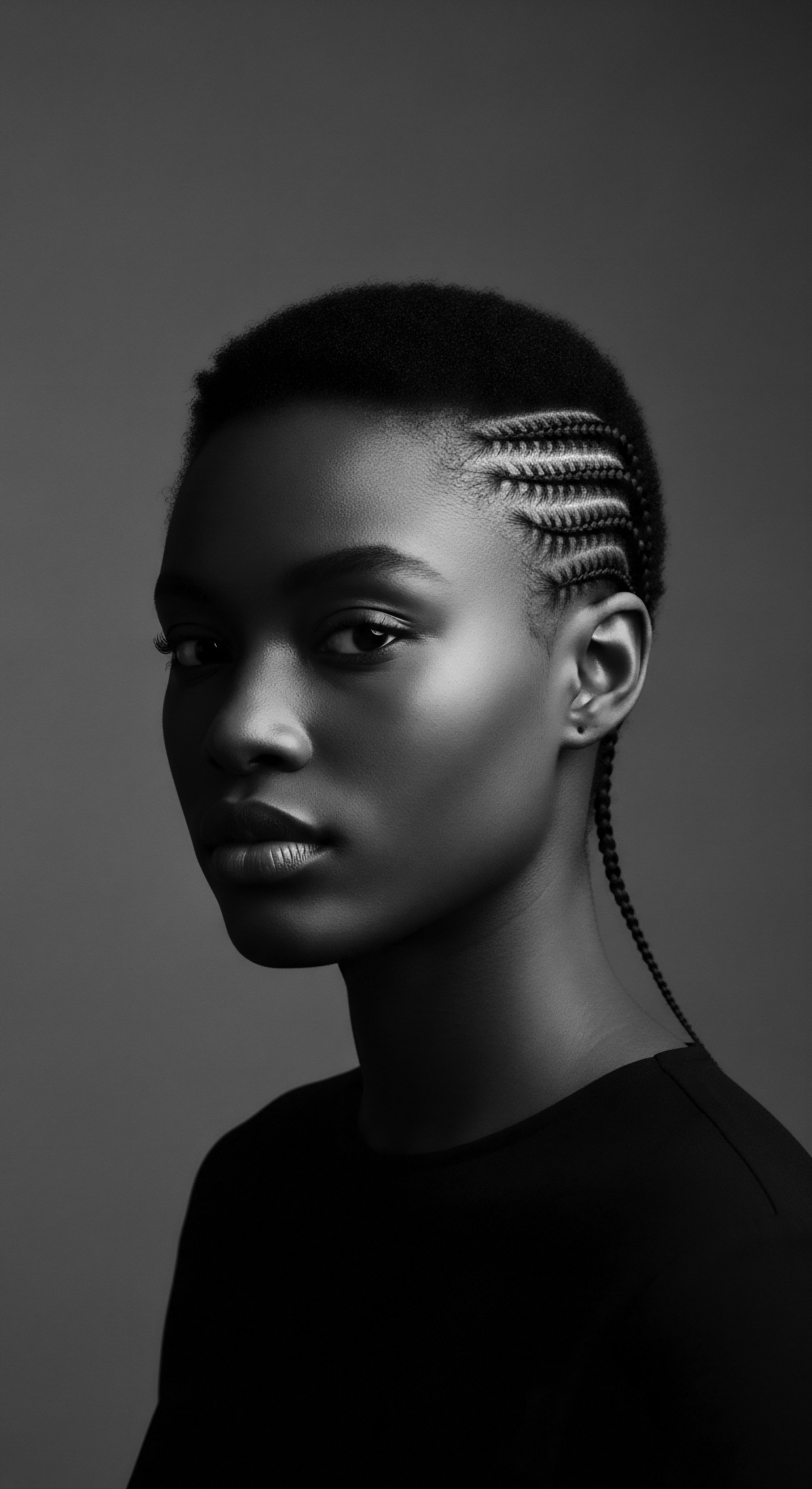
Fundamentals
The term Silk Protein Benefits refers to the advantageous properties derived from silk proteins when applied to hair, particularly textured hair. These proteins, primarily Fibroin and Sericin, are natural biopolymers produced by silkworms. They possess a unique molecular structure that allows them to interact with the hair shaft, offering a range of positive outcomes. The basic meaning of these benefits centers on the ability of silk proteins to enhance hair’s structural integrity, moisture retention, and overall appearance, making strands more resilient and pliable.
Their inclusion in hair care formulations stems from an understanding of hair’s fundamental composition, which is largely keratin, a protein itself. Therefore, introducing external proteins like those from silk can help supplement and support the hair’s natural framework.
Historically, the use of silk, albeit in its fabric form, for hair care is not a recent innovation. Across diverse cultures, silk headwraps and coverings have served to protect hairstyles, maintain moisture, and signify status. For instance, in West African traditions, intricately tied silk headwraps, such as the Gele in Nigeria or the Duku in Ghana, were worn for special occasions, reflecting cultural heritage and personal style while simultaneously shielding the hair beneath. This ancient practice underscores an intuitive, ancestral understanding of silk’s gentle nature and its ability to preserve hair, a wisdom that modern science now unpacks at a molecular level.

The Structural Significance
At its simplest, silk protein’s positive impact on hair arises from its capacity to form a protective film on the hair’s surface and, for hydrolyzed versions, to penetrate the outer layers. Hair, especially textured hair with its characteristic twists and bends, can have naturally lifted cuticles, making it more susceptible to moisture loss and breakage. Silk proteins work to smooth these cuticles, creating a more uniform surface. This action helps to:
- Reduce Friction ❉ The smooth surface lessens tangling and mechanical stress during styling.
- Improve Elasticity ❉ By binding to keratin, silk proteins can enhance the hair’s ability to stretch without breaking.
- Boost Moisture Retention ❉ They possess water-attracting properties, drawing moisture into the hair shaft and sealing it in.
These foundational benefits are especially relevant for textured hair, which often contends with inherent dryness due to the natural oils from the scalp not easily traveling down the spiral structure of the strands.
Silk protein benefits emerge from its unique ability to fortify hair’s structure, enhance moisture, and provide a protective veil, particularly valuable for textured hair.
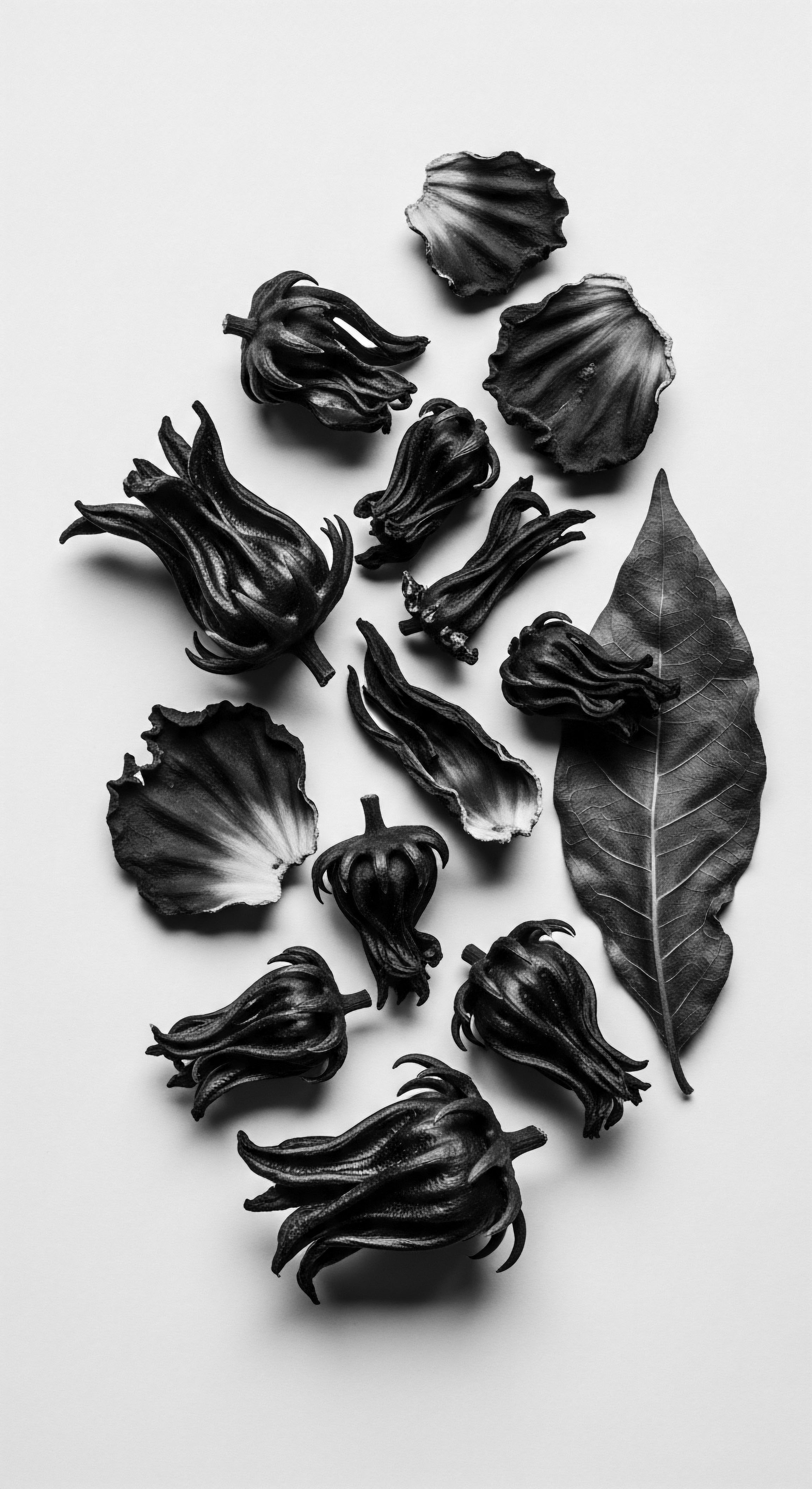
Early Interpretations and Uses
The earliest interpretations of silk’s value for hair were likely experiential, observed through the softness and sheen imparted by silk fabrics. While direct application of silk protein in ancient hair treatments might not be explicitly documented in the same way modern formulations are, the reverence for silk and its association with beauty and protection is undeniable. Ancient Egyptian women, for example, were known for their elaborate hair care rituals, utilizing various oils and natural ingredients to maintain softness and luster. Though specific “silk protein” treatments are not widely cited, the desire for hair that felt “silky” was certainly present, achieved through practices like healing packs of eggs and water.
The designation of silk as a luxurious and protective material, often reserved for royalty and significant ceremonies, speaks volumes about its perceived benefits. Its very presence in cultural adornments and practices implies a recognition of its superior qualities for hair preservation, a quiet testament to its enduring significance.
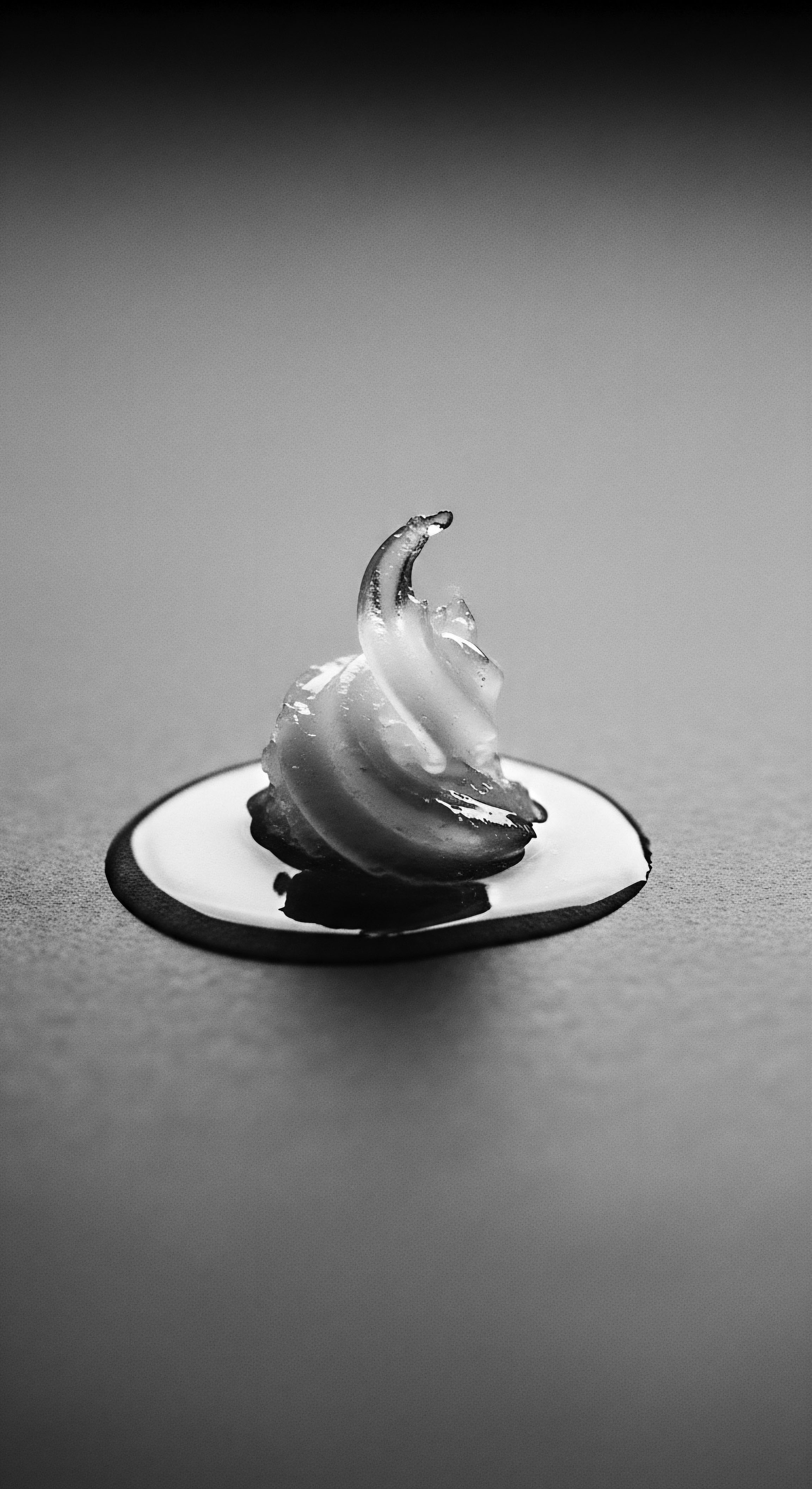
Intermediate
Moving beyond the rudimentary understanding, the Silk Protein Benefits take on a deeper significance when considering the complex architecture of textured hair and the historical care practices that have long sought to preserve its integrity. This intermediate exploration reveals silk proteins not merely as conditioning agents but as components that bridge the gap between traditional wisdom and contemporary scientific understanding, particularly for hair types ranging from loose curls to tightly coiled strands. The meaning here expands to encompass their role in mitigating common challenges faced by textured hair, such as dryness, brittleness, and susceptibility to breakage.
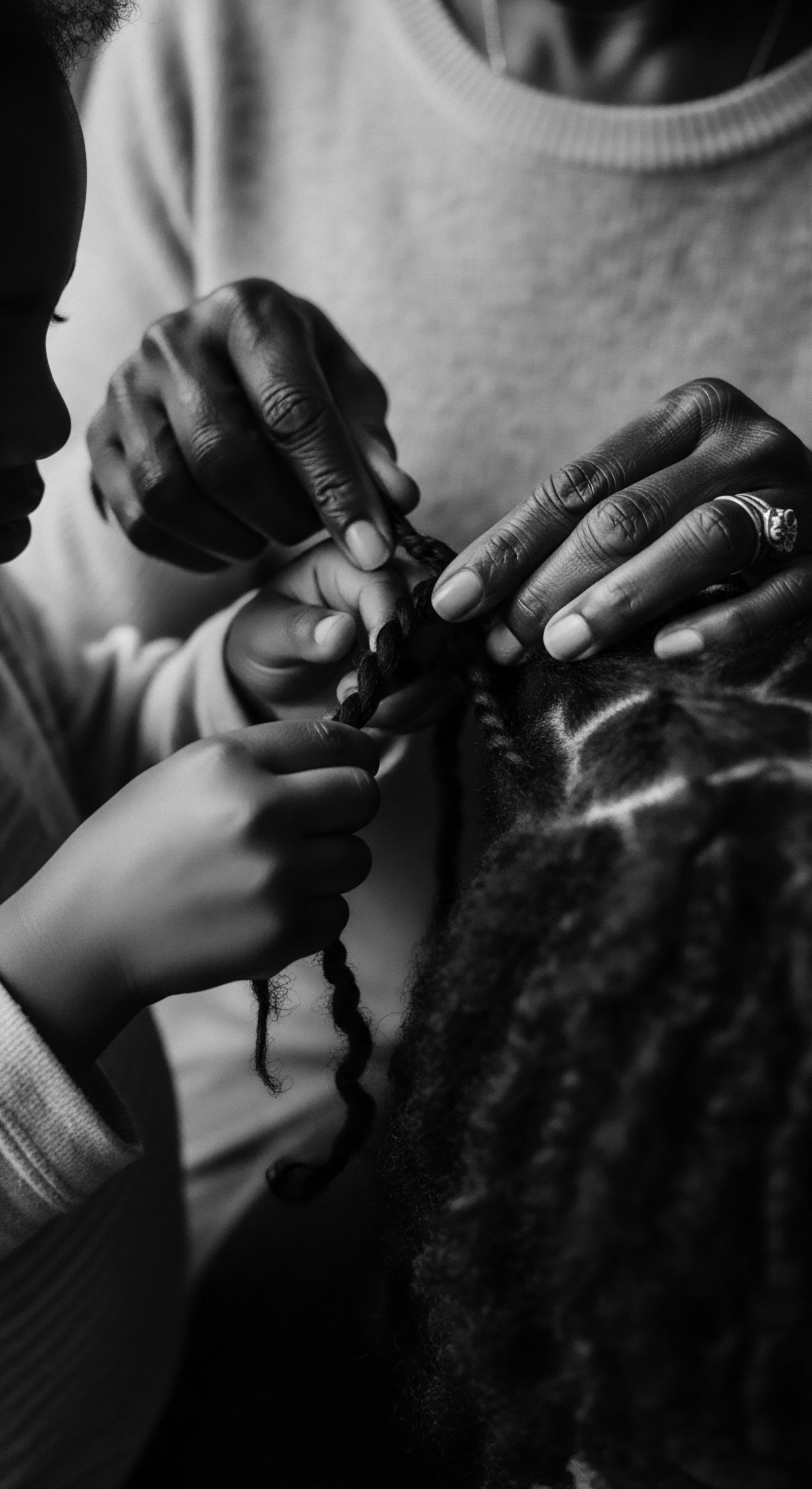
The Tender Thread ❉ Ancestral Wisdom and Modern Validation
For generations, communities with textured hair have relied on a rich heritage of natural ingredients and rituals to maintain hair health. These practices, often passed down through familial lines, intuitively addressed many of the concerns that silk proteins now scientifically alleviate. Consider the use of natural butters and oils, like Shea Butter from West Africa, which has been a mainstay in hair care for centuries, recognized for its moisturizing and protective properties. While shea butter offers different mechanisms of action, the shared aim with silk proteins is to fortify the hair shaft and retain moisture.
The traditional “hair mapping” practices of various African communities, including those in Chad and Somalia, involved a sophisticated understanding of hair’s unique characteristics—porosity, density, and elasticity—long before these terms became commonplace in modern cosmetology. This ancestral knowledge, developed through careful observation, sought to create personalized care approaches that align with the benefits silk proteins offer today, such as strengthening strands and improving elasticity to prevent breakage.
| Traditional Ingredient/Practice Chebe Powder (Croton zambesicus) |
| Region/Culture Chad, Central Africa |
| Observed Benefit (Ancestral Wisdom) Length retention, strengthening strands. |
| Modern/Silk Protein Link Reduces breakage, similar to silk protein's reinforcement. |
| Traditional Ingredient/Practice Hibiscus Sabdariffa Leaf |
| Region/Culture West Africa (Nigeria, Ghana) |
| Observed Benefit (Ancestral Wisdom) Strengthens hair strands, encourages growth. |
| Modern/Silk Protein Link Amino acids in hibiscus contribute to protein support. |
| Traditional Ingredient/Practice Ghee (Clarified Butter) |
| Region/Culture Ethiopian communities |
| Observed Benefit (Ancestral Wisdom) Moisturizes, seals in moisture, strengthens hair. |
| Modern/Silk Protein Link Lipid barrier support, complements protein's moisture retention. |
| Traditional Ingredient/Practice Rhassoul Clay |
| Region/Culture Morocco |
| Observed Benefit (Ancestral Wisdom) Cleanses without stripping, strengthens hair. |
| Modern/Silk Protein Link Mineral content can support hair structure, preparing it for protein absorption. |
| Traditional Ingredient/Practice These examples illustrate a continuous thread of care, where ancient practices intuitively sought outcomes now elucidated by the scientific understanding of components like silk protein. |
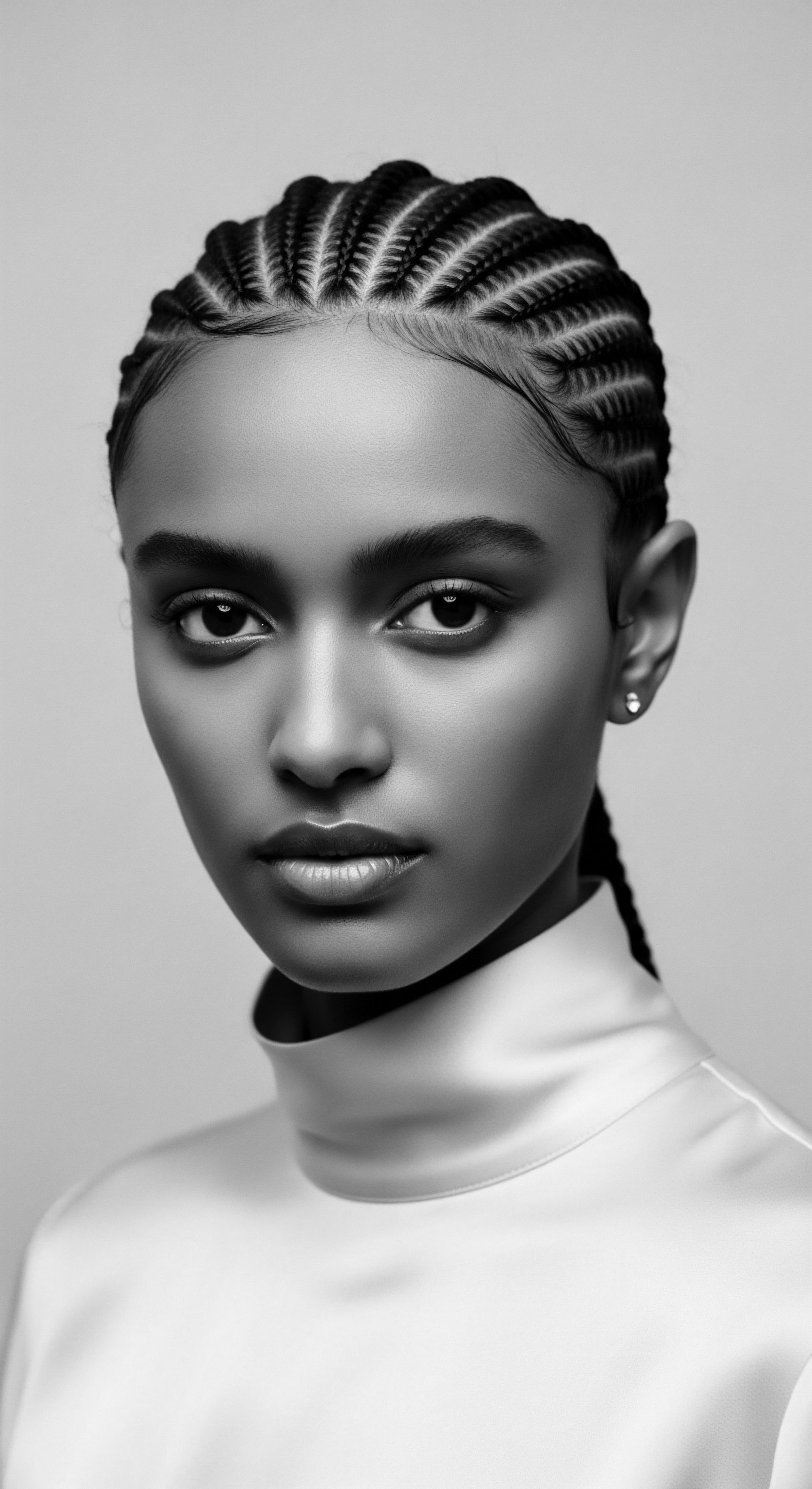
The Role of Hydrolyzed Silk Proteins
A more granular interpretation of silk protein’s efficacy involves its hydrolyzed form. When silk proteins are hydrolyzed, they are broken down into smaller peptides and amino acids. This reduction in molecular size allows them to penetrate the hair cuticle more effectively, rather than simply coating the surface. This deeper penetration is particularly advantageous for textured hair, which, due to its structural characteristics, can be more porous.
The penetration of these smaller protein fragments helps to:
- Repair Damaged Areas ❉ They can temporarily fill in gaps and smooth rough spots along the hair shaft.
- Increase Tensile Strength ❉ By integrating within the hair’s keratin structure, they contribute to greater resistance against stretching and breakage.
- Enhance Internal Hydration ❉ The amino acids, rich in hydroxyl and carboxyl groups, can attract and bind water molecules within the hair’s cortex.
This mechanistic understanding validates the long-held aspirations of ancestral hair care—to cultivate hair that is not only beautiful in its natural form but also robust and resilient. The very act of applying these proteins becomes a modern echo of ancestral practices that sought to fortify and protect, ensuring the hair could withstand daily manipulation and environmental factors.
The intermediate understanding of silk protein benefits reveals their capacity to repair and strengthen textured hair from within, mirroring the intentions of ancient care traditions.

A Statistic Reflecting Heritage and Hair Health
Consider the statistic that individuals of African ancestry often exhibit hair fibers with a more elliptical or flat shape, which contributes to increased curliness but also creates points of weakness and decreases tensile strength, making the hair more fragile. (Loussouarn et al. 2007, as cited in) This inherent structural characteristic means textured hair is often more susceptible to breakage compared to other hair types. This fact lends profound weight to the historical and ongoing emphasis on strengthening and protective hair care practices within Black and mixed-race communities.
The consistent quest for ingredients and methods that could enhance hair’s resilience was not merely aesthetic; it was a response to the biological realities of textured hair. Silk proteins, with their documented ability to improve tensile strength and reduce breakage, directly address this long-standing need, aligning modern scientific solutions with ancestral hair health aspirations.
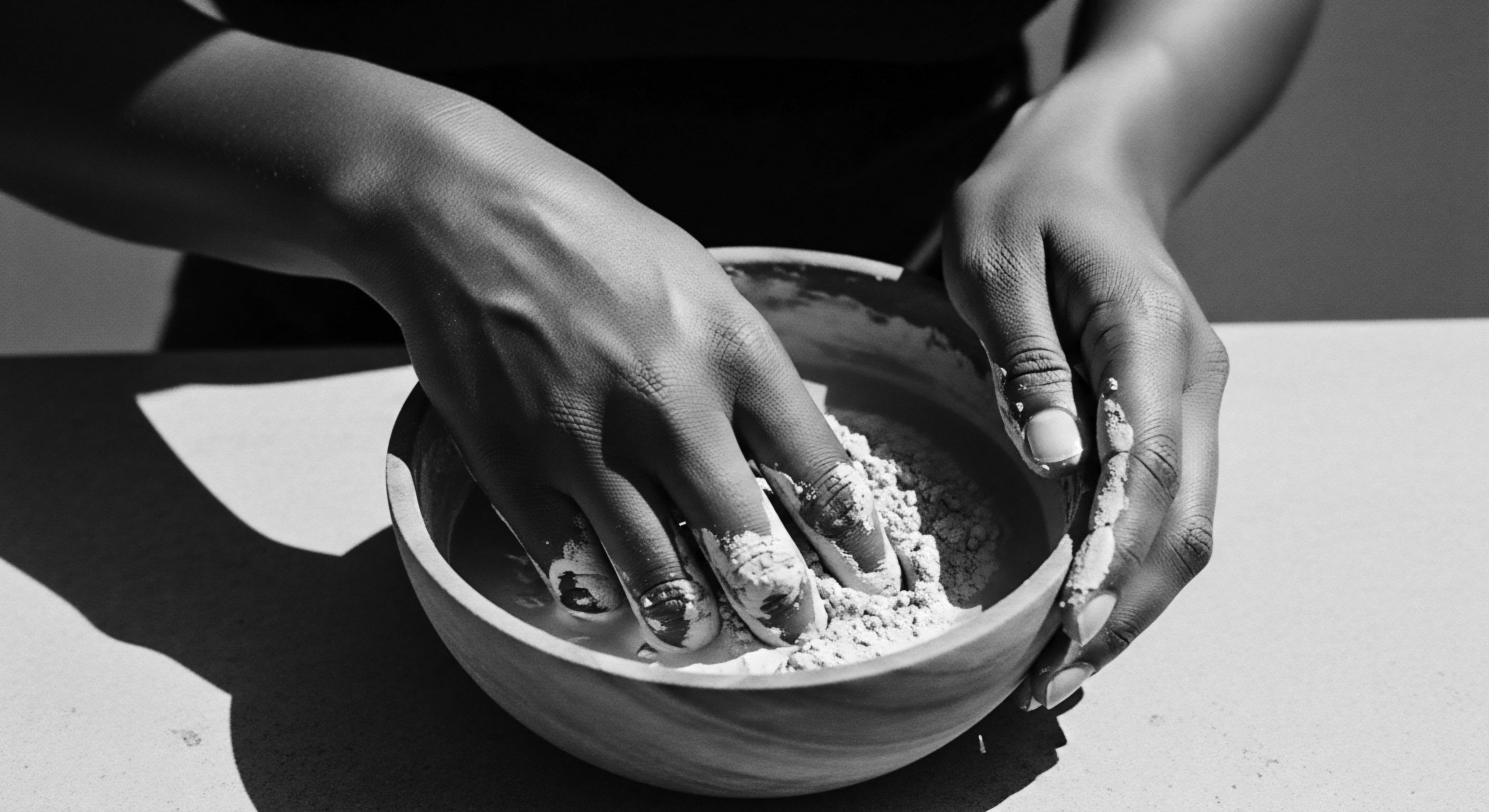
Academic
The academic definition and meaning of Silk Protein Benefits extend far beyond a simple list of positive attributes, delving into the intricate biochemical interactions and historical contexts that underscore its profound significance for textured hair. This scholarly perspective treats silk protein as a biopolymeric marvel, its utility for hair care, particularly within Black and mixed-race hair experiences, representing a convergence of ancient ethnobotanical wisdom and contemporary material science. The meaning is not static; it is a dynamic interpretation, clarified through rigorous research and an examination of its diverse perspectives, multicultural applications, and interconnected incidences across various fields, especially where long-term consequences and success insights are provided.
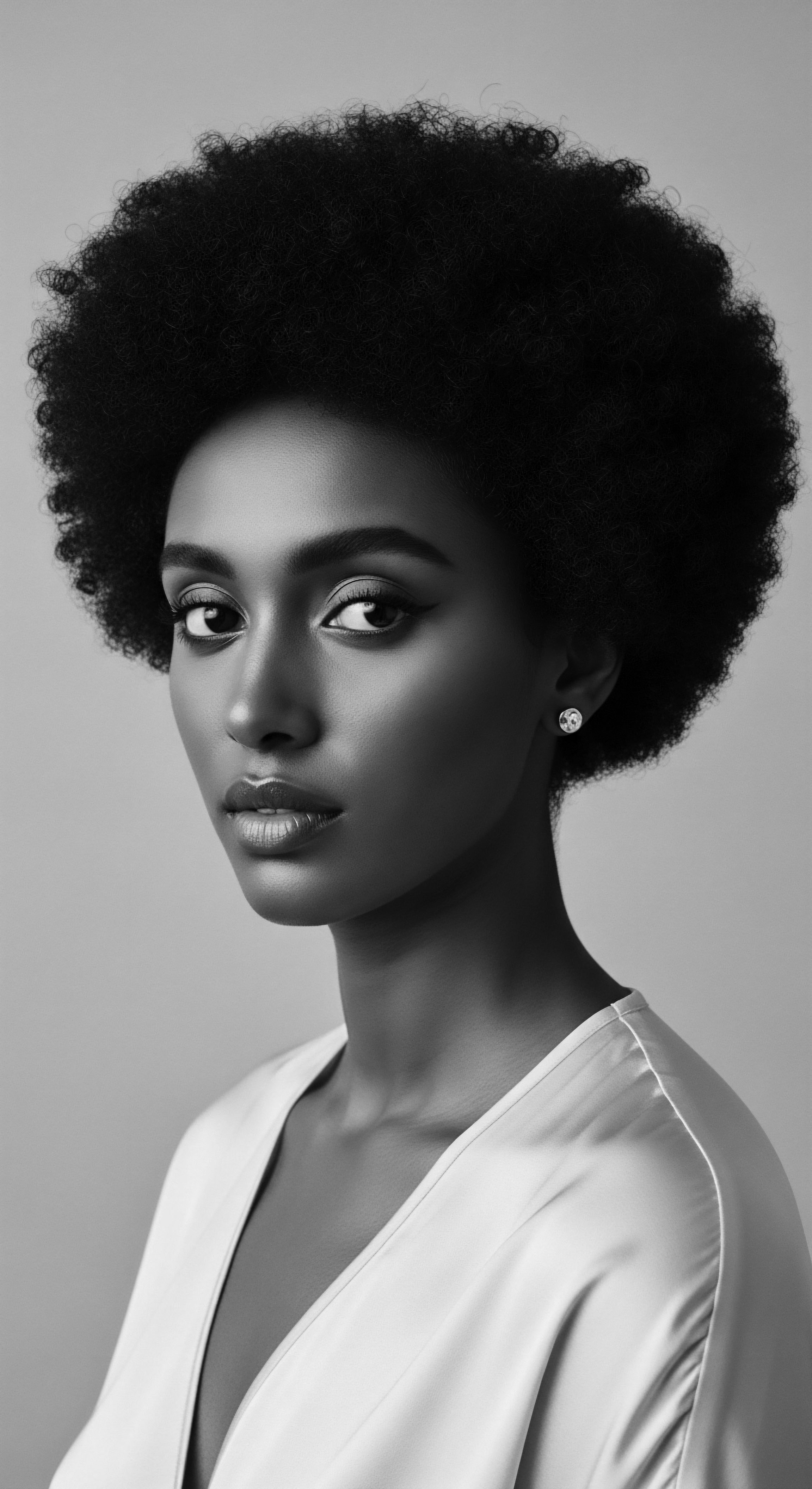
Biochemical Elucidation and Structural Affinity
From an academic standpoint, the benefits of silk protein are rooted in its unique amino acid composition and its remarkable compatibility with the hair’s primary structural protein, Keratin. Silk is predominantly composed of two proteins ❉ Fibroin, which forms the core filament, and Sericin, a gummy outer layer that binds the fibroin strands. Both possess distinct properties contributing to hair health.
Fibroin, with its high content of glycine, alanine, and serine, forms a robust, crystalline structure that can interact with the keratin fibrils within the hair cortex. Sericin, being more hydrophilic and rich in hydroxyl, carboxyl, and amino groups, exhibits excellent film-forming and moisture-binding capabilities.
The academic understanding of silk protein’s impact on textured hair specifically highlights its ability to address the inherent challenges of this hair type. Afro-textured hair, characterized by its elliptical cross-section and numerous twists and bends, exhibits a higher propensity for cuticle lifting and lower tensile strength compared to straighter hair types. This structural reality contributes to increased fragility and moisture loss. When hydrolyzed silk proteins are applied, their low molecular weight allows for penetration into the cuticle and cortex, where they can temporarily patch compromised areas and reinforce the hair’s internal structure.
The mechanism involves the formation of a protective, semi-occlusive film on the hair surface by both fibroin and sericin, which helps to seal the cuticle and reduce water loss. Furthermore, the amino acids of silk protein can bind to the keratin of the hair, enhancing its elasticity and reducing breakage. This phenomenon is not merely cosmetic; it represents a biochemical intervention that directly counteracts the mechanical and environmental stresses textured hair often endures.
Academically, silk protein’s efficacy on textured hair is a testament to its biochemical affinity with keratin, providing structural reinforcement and enhanced hydration that counters inherent fragility.
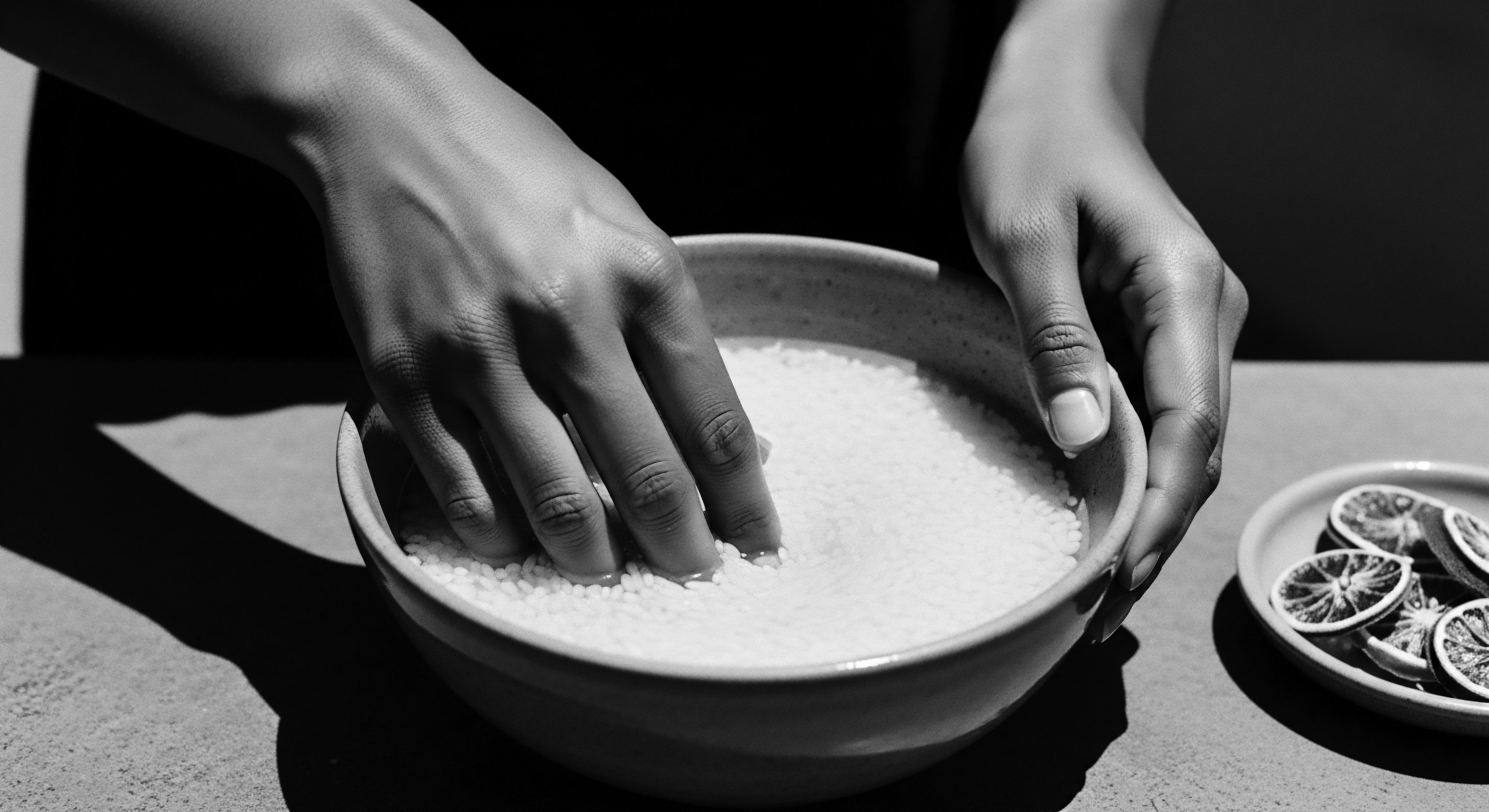
Echoes from the Source ❉ Ancestral Knowledge as a Precursor to Scientific Inquiry
The application of silk protein in modern hair care, while scientifically validated, finds its conceptual lineage in ancestral practices that intuitively sought similar outcomes. For millennia, communities across Africa developed sophisticated hair care systems, not through laboratories, but through deep observation and intergenerational transmission of knowledge. These traditions often involved ingredients rich in proteins, lipids, and humectants, recognizing their ability to fortify and preserve hair. For instance, ethnobotanical studies reveal a wealth of African plants used for hair treatment and care, addressing concerns such as hair loss, dandruff, and overall conditioning.
One compelling example is the use of Animal By-Products in historical hair care. While modern vegan formulations often seek alternatives, animal horns and hooves, rich in keratin, were traditionally processed for their protein content in various cultures to create hair care products. Similarly, historical accounts from Ethiopian and Somali communities mention the use of whipped animal milk and water, or ghee (clarified butter), as “hair butter” to maintain hair and promote strength.
These practices, though distinct from direct silk protein application, demonstrate a long-standing understanding of the need for protein-rich and moisturizing elements to support hair health. The very definition of “protein” in hair care, from an ancestral perspective, was embodied in these natural, readily available resources, a testament to human ingenuity and adaptive wisdom.
The rigorous ethnobotanical survey conducted in the West Bank, Palestine, identified 41 plant species utilized for hair and scalp disorders, with plant oils and fruits being the most commonly used parts. The high Informant Consensus Factor (ICF) of 0.95 reflects strong agreement among informants regarding the efficacy of these traditional remedies. This empirical consensus, built over generations, provides a powerful parallel to the scientific validation sought in modern research, suggesting that ancient practices were, in essence, early forms of empirical data collection regarding hair health. The contemporary scientific examination of silk protein benefits, therefore, is not a displacement of ancestral knowledge but rather a deeper, molecular-level explication of principles long understood and applied.
- Protein-Rich Plant Extracts ❉ Many traditional African hair care practices involved plants known for their fortifying properties.
- Protective Styling ❉ Braids, twists, and headwraps, often seen as cultural expressions, also served the functional role of protecting hair from environmental damage and reducing manipulation.
- Natural Emollients and Humectants ❉ The use of shea butter, coconut oil, and other plant-derived oils provided moisture and sealed the hair, complementing the strengthening effects of protein-like ingredients.

The Unbound Helix ❉ Identity, Resilience, and Future Directions
The academic meaning of Silk Protein Benefits extends beyond mere biochemistry to encompass its role in the broader cultural narrative of textured hair. Hair, for Black and mixed-race individuals, is far more than protein strands; it is a profound symbol of identity, resistance, and heritage. The historical weaponization of hair texture during periods of enslavement and colonialism, where straighter hair was often privileged, underscores the deep societal implications of hair care choices.
The natural hair movement, which gained prominence in the 1960s and re-emerged strongly in the 2000s, encouraged Black women to embrace their natural hair textures, rejecting Eurocentric beauty standards. In this context, ingredients like silk protein, which support the health and vitality of natural, textured hair, become part of a larger conversation about self-acceptance and cultural affirmation. The ability of silk protein to reduce breakage and enhance the intrinsic beauty of textured hair contributes to the individual’s confidence and connection to their ancestral legacy.
From a research perspective, future directions for understanding Silk Protein Benefits in textured hair could involve more targeted studies on specific curl patterns and porosities. For instance, exploring how varying concentrations of hydrolyzed silk proteins interact with different levels of hair porosity—from low to high—could yield more personalized and effective care strategies. High porosity hair, often characterized by a compromised cuticle, may particularly benefit from the film-forming and cuticle-sealing properties of silk proteins.
The academic pursuit of knowledge surrounding silk protein is not simply about optimizing product formulations; it is about honoring the enduring wisdom of ancestral practices, providing scientific validation for long-held beliefs, and contributing to the holistic well-being and cultural pride of individuals with textured hair. The exploration of this protein’s benefits is a continuous journey, connecting elemental biology with the rich, living traditions of care and identity.
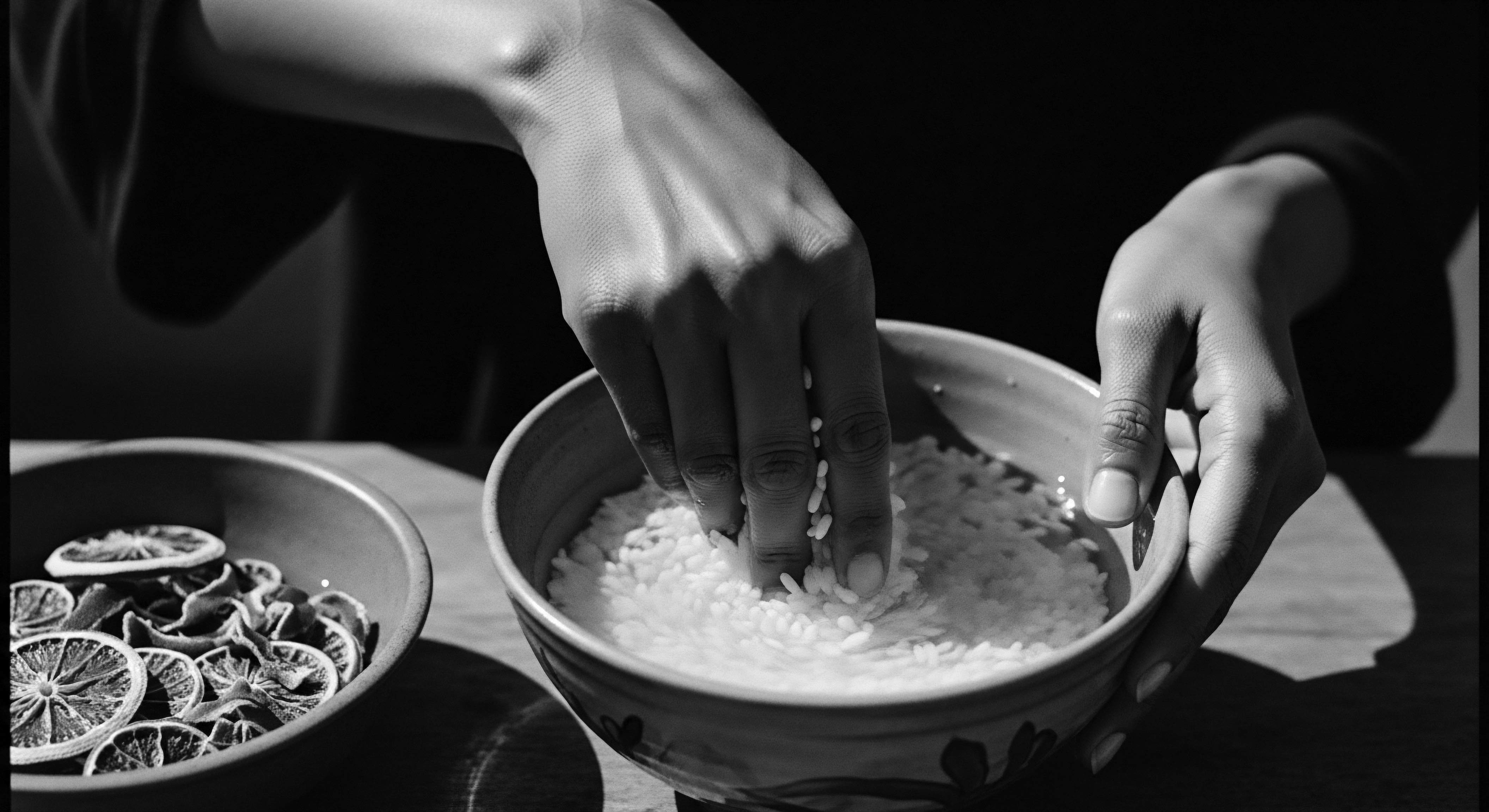
Reflection on the Heritage of Silk Protein Benefits
The journey through the intricate world of Silk Protein Benefits, particularly as it relates to textured hair, reveals a profound continuity of care that stretches across millennia. It is a testament to the enduring wisdom of ancestral hands that understood, perhaps without scientific nomenclature, the very language of hair. The “Soul of a Strand” ethos, which guides Roothea’s living library, finds its deep resonance here, acknowledging that each coil and curl carries not just its biological blueprint but also the whispers of generations past, their struggles, their triumphs, and their unwavering dedication to beauty and resilience.
This exploration has been a gentle reminder that the pursuit of healthy, vibrant hair is not a modern invention but a deeply rooted human endeavor, especially within Black and mixed-race communities. The historical ingenuity in utilizing natural resources, from plant extracts to animal-derived elements, to fortify hair speaks volumes. It shows a profound connection to the earth and its offerings, a relationship of reciprocity where nature provided the remedies and humanity, through trial and observation, learned their deepest secrets. The modern understanding of silk protein, with its precise molecular explanations, does not overshadow this ancestral knowledge; rather, it illuminates it, offering a scientific lens through which to appreciate the profound efficacy of what was once simply known to be true.
The benefits of silk protein, in this light, are not merely about cosmetic enhancement; they are about supporting a legacy. When we apply these proteins to textured hair, we are, in a sense, participating in a continuum of care that honors the ancestral practices of strengthening, protecting, and celebrating hair. It is a quiet act of defiance against historical narratives that sought to diminish the beauty and significance of textured hair, and a joyous affirmation of its inherent strength and versatility.
The very act of nourishing these strands becomes a personal ritual, connecting us to a collective heritage of resilience and self-love. This understanding transforms the mundane act of hair care into a sacred practice, a dialogue between the past, present, and future, all woven into the magnificent story of a single strand.
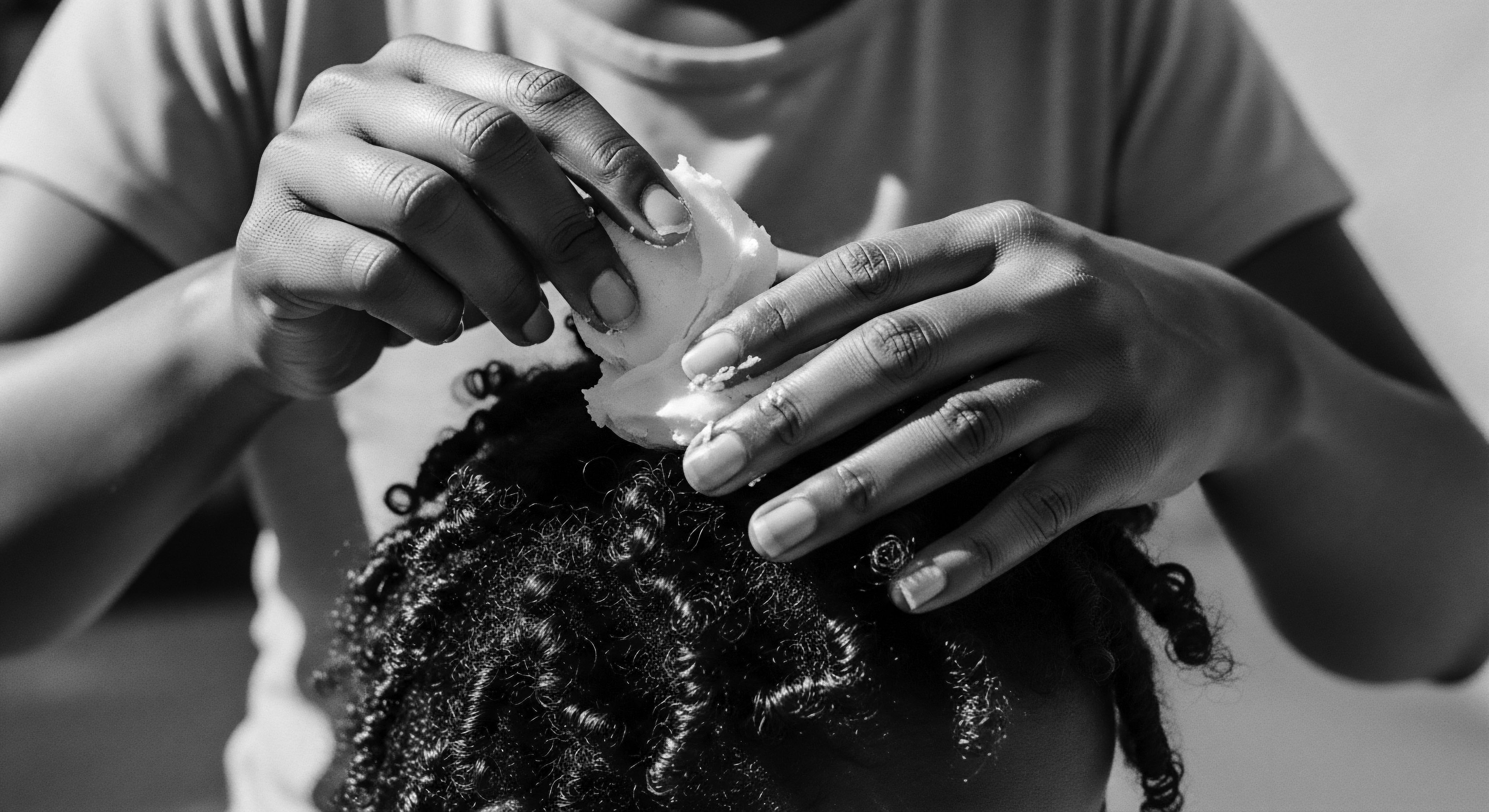
References
- Mouchane, M. Taybi, H. Gouitaa, N. & Assem, N. (2017). Ethnopharmacological survey of home remedies used for treatment of hair and scalp and their methods of preparation in the West Bank-Palestine. Journal of Ethnopharmacology, 205, 1-10.
- Johnson Jr, W. Boyer, I. Belsito, D. Hill, R. A. & Belsito, D. V. (2020). Safety Assessment of Silk Protein Ingredients as Used in Cosmetics. International Journal of Toxicology, 39(5), 415-429.
- Mouchane, M. Taybi, H. Gouitaa, N. & Assem, N. (2021). Ethnobotanical Survey of Medicinal Plants used in the Treatment and Care of Hair in Karia ba Mohamed (Northern Morocco). International Journal of Research and Development in Pharmacy and Life Sciences, 10(2), 203-209.
- Loussouarn, G. et al. (2007). Hair mechanical properties and African ancestry. Journal of Cosmetic Science, 58(2), 163-176. (Cited in)
- Reyes-Garcia, V. et al. (2006). Cultural importance of plants ❉ a comparison of quantitative methods. Ethnobotany Research and Applications, 4, 1-13. (Cited in)
- Ockerman, H. W. & Basu, L. (2000). Edible By-Products. CRC Press. (Cited in)
- Chilakamarry, C. R. et al. (2021). Animal-Derived Ingredients in Cosmetics ❉ A Review. Cosmetics, 8(3), 67. (Cited in)
- Aramwit, P. et al. (2012). Anti-inflammatory activity of sericin. Journal of Inflammation, 9(1), 1-8. (Cited in)
- Takasu, Y. et al. (2002). Silk fibroin and sericin ❉ a comprehensive review. Journal of Insect Biotechnology and Sericology, 71(1), 1-18. (Cited in)
- Alves, R. R. N. & Albuquerque, U. P. (2020). Ethnozoology ❉ Animals in Traditional Medical and Cultural Practices. Academic Press. (Cited in)
- Shavandi, A. et al. (2017). Silk fibroin for tissue engineering and regenerative medicine. Journal of Materials Science ❉ Materials in Medicine, 28(2), 1-15. (Cited in)
- Wang, L. & Tong, Z. (2022). Silk proteins for cosmetic applications. Cosmetics, 9(1), 1-15. (Cited in)
- Boyer, I. J. et al. (2017). Cosmetic Ingredient Review Expert Panel. Safety Assessment of Silk Protein Ingredients as Used in Cosmetics. International Journal of Toxicology, 36(3_suppl), 101S-117S. (Cited in)
